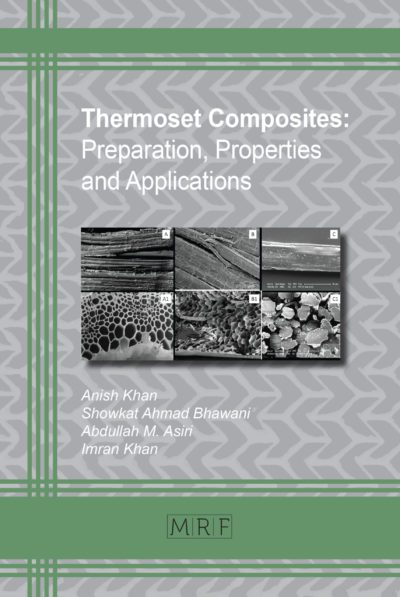The Influence of Hot Water Washing Cycles on Tensile Properties of Curauá Fiber
B. Zukowski, F. de Andrade Silva, R.D.T. Filho
Abstract. The work in hand presents the preliminary results of an experimental campaign on the influence of hot water treatment on the tensile strength of high performance natural curauá fibers and its dimensional changes. In this work we have studied the monotonic tensile behavior of natural and treated curauá fibers. Tensile tests were performed on a microforce testing system using four different gage lengths: 10, 20, 30 and 40mm. The cross-sectional area of the fiber was measured using scanning electron microscope (SEM) micrographs and image analysis. The measured Young’s modulus was corrected for the machine compliance. Weibull statistics were used to quantify the degree of variability in fiber strength at the different gage lengths. Furthermore, the time length of the used hot water treatment was investigated. The fibers were divided into three groups: reference, 9 hours and 18 hours of treatment in hot water (80° C) with water being changed every 3 hours. This process was applied to remove the wax, impurities and plant residues from the surface of the fibers. The used treatment increased the tensile strength of the fibers and, after 18 hours, caused a notable cross-sectional area reduction.
Keywords
Curauá Fiber, Mechanical Properties, Fiber Treatment, SEM
Published online , 10 pages
Copyright © 2018 by the author(s)
Published under license by Materials Research Forum LLC., Millersville PA, USA
Citation: B. Zukowski, F. de Andrade Silva, R.D.T. Filho, ‘The Influence of Hot Water Washing Cycles on Tensile Properties of Curauá Fiber’, Materials Research Proceedings, Vol. 7, pp 373-382, 2018
DOI: https://dx.doi.org/10.21741/9781945291838-35
The article was published as article 35 of the book Non-Conventional Materials and Technologies
References
[1] Silva T.A.L., Pereira Bresolin I.R.A., Campos-Takaki G.M., Aoyama H., Garrard I., Tambourgi E.B., (2014). In: Extraction and preliminary characterization of bromelain from curaua (ananas erectifolius l.b.smith) purple and white, Chemical Engineering Transactions, 37, 769-774 DOI: 10.3303/CET1437129.
[2] Reis, I.N.R. de S.; Lameira, O.A.; Cordeiro, I.M.C.C. (2004). In: Efeito da adubação orgânica e de NPK no desenvolvimento do curauá (Ananas erectifolius). Congresso Brasileiro de Sistemas Agroflorestais, 5., 2004, Curitiba. Anais. Curitiba: Embrapa Florestas, 2004. p.332-334. (Embrapa Florestas. Documentos, 98).
[3] E.C.P. de Oliveira et al. (2008). In: Leaf structure of curaua in different intensities of photosynthetically active radiation. Pesquisa Agropecuária Brasileira, Brasília, DF, v.43, n.2, p. 163-169, fev. 2008.
[4] I.M. Castro Coimbra Cordeiro et al. (2009). In: Economical analysis of cultivation systems with Schizolobium parahyba var. amazonicum (Huber ex Ducke) Barneby (Parica) and Ananas comosus var. erectifolius (L. B. Smith) Coppus & Leal (Curaua) crop at Aurora do Pará, Brazil. Faculty of Agronomy Journal (LUZ). University of Zulia, Maracaibo, Venezuela, 2009, 26:p.243-265.
[5] Ledo, I. A. de M. (1967). In: O cultivo do curauá no lago grande de Franca. Belém: Banco da Amazönia S/A – BASA – 1967. 23 p.
[6] Silva F. de A., Toledo R.D., (2013). In: The effect of fiber morphology on the tensile strength of natural fibers, Journal of Materials Research and Technology, 2013;2(2):p 149-157. https://doi.org/10.1016/j.jmrt.2013.02.003
[7] d’Almeida, A. L. F. S., Melo Filho, J. A., & Toledo Filho, R. D. (2009). In: Use of curauá fibers as reinforcement in cement composites. CHEMICAL ENGINEERING, 17, 2009.
[8] Silva O. G. da, (2013). Produção e caracterização de compósitos à base de fibras de curauá, amido termoplástico e polietileno, utilizando-se a termografia, Belo Horizonte, 129p, Dissertação (Mestrado) – Escola de Design – UEMG, Universidade do Estado de Minas Gerais.
[9] ASTM. ASTM C1557-03 Standard Test Method for Tensile Strength and Young’s Modulus of Fibers West Conshohocken, PA, USA: American Society for Testing and Materials; 2008.
[10] Silva FA, Chawla N, Toledo Filho RD. (2008). In: Tensile behavior of high performance (sisal) fibers. Compos Sci Technol 2008;68:3438–43. https://doi.org/10.1016/j.compscitech.2008.10.001
[11] Chawla N, Kerr M, Chawla KK., (2005). In: Monotonic and cyclic fatigue behavior of high-performance ceramic fibers. J Am Ceram Soc 2005;88:101–8. https://doi.org/10.1111/j.1551-2916.2004.00007.x













